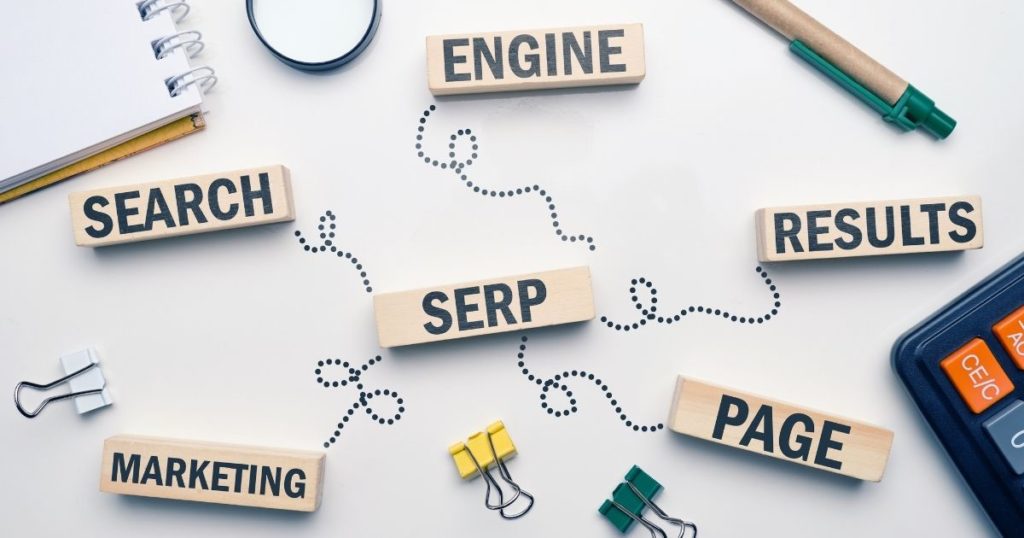If you’re looking for a way to increase your website traffic, buying it is an option. Should you buy website traffic, or is it better to work to increase your visitors with organic search engine optimization?

Should You Pay for Website Traffic?
There are many ways to generate website traffic, and the first step is deciding what type of traffic you want. You can choose between organic search engine optimization (SEO) or paid advertising like Google AdWords.
SEO takes time and effort to see results, but paid advertising will get you more visitors quickly. Set a budget, so you know how much money you have to spend on driving traffic, and then determine where that traffic comes from.

If you want to increase your website traffic without relying on SEO or free social media marketing, then it might be time to buy some website traffic from an ad platform like Google AdWords or Facebook Ads.
Ideally, you’d blend both techniques so that while you wait for your organic content to rank, you can buy traffic in the meantime.
The Basics of Keyword Strategies for Paid and Organic Traffic
The most significant difference between organic traffic and paid is that organic search engine optimization (SEO) takes time, but you can buy website traffic quickly. What they have in common, however, is keyword strategies.
You start off by choosing keywords to target with your content. Both SEO and PPC are based on keywords. For example, let’s say that you want to build a website about “organic dog food for sale in Seattle.” You could then use the keyword “organic dog food” as your content focus. If someone searches Google for this term, your site will likely appear near the top of search results, provided the content is good.
In paid advertising, there’s a bid on keywords, which is what determines you’re ad spend. For example, the more you bid for “organic dog food” in Seattle, the higher your ads will appear when someone searches for that term.
The Same Tools Can Help with Organic Visits and Paid Visits
There are many content marketing tools that can help with both organic search engine optimization (SEO) and paid advertising. For instance, Google Analytics is used to make sense of traffic sources. You would likely use it to understand how much money you’ve spent on website traffic by using PPC campaigns or other methods.

It could also show you the number of visits your organic search has driven to your site if you track keywords closely enough. Optimizely is another useful tool that helps drive targeted traffic for both PPC and SEO efforts.
What is Organic Website Traffic?
Organic traffic is the result of search engine optimization (SEO). It takes weeks or months, or even up to a year, to see results. With SEO, you create content that is relevant and linked to and from other relevant websites.
Search engines will find this content and recommend it through search engine rankings. You can then attract more visitors by optimizing your website for keywords people are likely searching for.
Organic traffic happens when Google thinks your business/website has valuable information worth sending traffic to. If Google doesn’t send traffic, it indicates that your site is not currently relevant or linked to by other trusted sites.
There’s a misconception that organic website traffic is free. It isn’t. In fact, a proper content marketing strategy with consistently published, high-quality articles can be a substantial investment over the long term based on how and where you’re generating content. The difference is that with a content strategy, you’re paying for articles. With PPC, you’re paying for views of that content.
The Importance of Content for Organic SEO and Paid Traffic
The most effective way to get search engines to send targeted visitors is by having a lot of content that’s original and valuable. Keep in mind that Google rewards sites that it believes have a lot of value and the best content, so if you’ve set out to improve your SEO, make sure you publish great content on a regular basis.
If a person arrives at your website, whether organically or as a result of a paid ad if they don’t find what they’re looking for, they’ll leave. This is called a bounce, and a high bounce rate is bad news for your search engine authority.
Content is essential because it tells Google that you’re a trustworthy site that deserves to rank. When people visit your website, they’ll be able to see how often you update your content and whether or not it’s high quality.

For a content marketing strategy to be most effective, you need to have high-quality content, lots of it, and regular updates. Google is continuously crawling the web, looking for new websites to add to its index. If your site gets crawled regularly, there’s a good chance you’ll appear in search results.
Search engines are updating their algorithms constantly based on user behavior so that they can better evaluate whether or not a website should be ranked highly in search results.
An important factor is how much time someone spends engaged with your page when they click on it from search engine results pages (SERPs). The more engaged someone is with your content when they go to your website, the more chances there are that you’ll rank well in SERPs.
So choosing to pay for ads or buy website traffic does not replace or eliminate the need for outstanding content and a solid strategy for marketing it. It does, however, get more eyes on your content while you’re waiting for the search engine algorithms to do their thing.

In the past, companies would rely strictly on organic search results to get their pages ranked high in Google. However, with the constant changes that Google makes to its algorithms, more and more businesses are beginning to use a combination of both paid advertising and organic ranking strategies. The results they’re seeing from this approach have been extremely positive.
It’s not surprising that more and more companies are beginning to do both – to take advantage of the benefits that each one brings. Having a presence in both organic search results and paid advertisements is the best way to get your website noticed. The only downside is that it can be expensive, depending on how much you’re willing to spend on advertising.
What is Paid Website Traffic?
Paid advertising traffic sources are typically cost-per-click (CPC) products like Google AdWords. There are many other paid advertising platforms, including social media networks like Facebook Ads and Twitter Promoted Tweets.
Each platform has its own rules for how the traffic is delivered. Some will use email marketing lists you’ve bought somewhere else, while others might prefer a different method so they can track conversions better. The most popular ad platforms usually offer some sort of tracking code that sends information about the website visitor back to the advertiser’s server.
The benefits of paid advertising include:
- Quickly get a campaign up and running without having to wait weeks or months for organic results.
- Dynamic and creative. You can test various formats, headlines, images, and descriptions to see which works best.
- Targeting options. These vary from platform to platform but typically allow you to block certain demographics or interests that don’t fit your goals.
- Price control. If the campaign isn’t generating as many conversions as you like, you can reduce your bid and won’t have to wait months (or even years) for organic results.
- Getting an ROI faster. Paid traffic gets targeted people to your website instantly.
The Negative Side to Buying Website Traffic
- Lower quality traffic. It is possible that most of the visitors sent will bounce from your page quickly, making it more difficult to get a sale or sign-up than with organic search engine optimization efforts, which are less likely to result in bounce rates.
- Less control. There are more variables, and it becomes difficult to measure the return on your investment (ROI).

- Lower conversions. Paid traffic is typically specifically targeted, while organic searches contain a higher percentage of engaged users who found your site themselves, according to their own search terms. This means that they’re already researching or looking for what you offer instead of having someone else do all the work for them.
- Hard to set up. You still need keyword strategies and understand how to enter your ad’s criteria, such as demographics, the dates and times you feel are optimal for your ads to run, and other information.
Paid traffic has its benefits and drawbacks like any other form of marketing strategy, but there’s no denying how much faster it can get you results. It’s also very affordable compared to many other internet marketing strategies, which can cost several thousands of dollars without producing any significant returns for struggling businesses.
How to Get Started with Google AdWords
The first step to running ads for your website is opening a Google AdWords account. You can do this by going to Google and clicking on the link that says, ‘Create an AdWords Account.’
After you create an account, you’ll need to go through their helpful tutorial videos and other resources before inputting any data into the system. It’s also good practice to watch as many of these videos as possible since there are several ways you can set up and run campaigns with AdWords, and they all want to make sure that beginners don’t miss anything.
The next thing is to set up your new AdWords account with conversion tracking if it doesn’t already come activated when you open it (if not, click on the link that says set up conversion tracking).
After your Google AdWords account is set up, it’s easy to get going with running your paid campaigns. All you need to do is start creating ads and keywords. Each ad has a max character count, but it varies from platform to platform.
Once you get the hang of paid traffic, there are many other platforms that can be used, such as Bing or Facebook. You can even try out a few different networks at once so you can see which one gets the best results for your website!
Buying Traffic from Facebook Ads
As long as you have a Facebook page for your business, buying ads on the social media network couldn’t be easier.
On your main page, click ‘Create Ad.’ You can then select an objective or let Facebook suggest one for you. Then fill in information about what you’re trying to accomplish with this ad and how many impressions you want it to receive per day (the frequency), and over how many days (the duration).
After clicking continue, you’ll see a spot where you can input your targeting options, including demographics, interests, and locations. Just enter keywords that describe your target audience and press the blue ‘Save and Continue’ button at the bottom of the box.

Once this is done, enter the URL of your website in the box where it says ‘Website.’ Then create an ad describing what you do or are selling, type in a cost-per-click bid, and enter the maximum daily budget for this campaign. Finally, press the green ‘Place Order’ button at the bottom right of your screen to get started.
Buying traffic through Facebook ads is simple, but there are other factors that can affect performance, such as algorithm changes or negative feedback from users about their experience with your ads. The best way to ensure success with paid campaigns is to continuously test out different elements to find out what works best for your audience.
Conclusion
Have More Questions?
Contact our team at 702-917-0755 or email us at team@ballenbrands.com
![Buy Website Traffic: A Complete Guide for Beginners [2021]](https://ballenbrands.com/wp-content/uploads/2021/10/Ballen-Brands-Website-Traffic.png)
